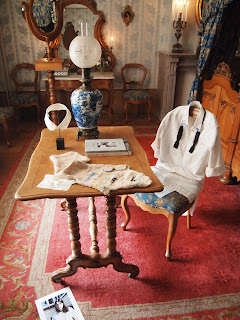door: Marij Rynja (2011)
"De
straat is een plek waar mensen elkaar treffen, een sociale ontmoetingsplaats
waar we elkaar bekijken en zelf bekeken worden, actief of passief. Tijdens dit monitor-proces leren we ook meer
over onszelf, van ons zelfbeeld in relatie tot de omgeving. Onbewust spiegel je
jezelf aan anderen om jezelf te evalueren. Het is een aangeboren verlangen van
mensen om jezelf te vergelijken en te spiegelen aan anderen [1]. Hoe je je als man of vrouw hoort te kleden,
welke mannelijke modecodes leven in je omgeving, verzamel je deels door te
kijken naar mensen in het dagelijks leven. Kleedgedrag is een performance van
gender, van identiteit, van socialisatie. Hoe je jezelf naar buiten presenteert
is een actieve en bewuste handeling [2].
De
straat is daarmee een belangrijke informatiebron voor het construeren van je
eigen identiteit. Met name voor mannen blijkt uit eigen onderzoek dat de
directe omgeving hem zijn belangrijkste modekennis verschaft. De straat is zijn
modemoment waar hij leert over nieuwe ideeën van mannelijke modes, als mede hoe
hij zichzelf van de heersende modes kan onderscheiden [3]. Terwijl mannen
andere mannen op straat bekijken, denken zij: ‘O dat is geloof ik nu in de mode
aan het komen. Is het wat voor mij? Hoe die meneer zijn pak draagt, vind ik
cool, dat ga ik ook eens proberen’. Bij wijze van.
Straat roept associaties op met
dynamiek, representatie van de werkelijkheid, het werkende leven, de
arbeidersklasse, een creatieve broedplaats, een plek van vrijheid. Maar de straat
symboliseert ook gevaar, criminaliteit en overleven. De straat leeft en doet zo
zijn eigen ding. Mede daarom heeft straatcultuur een sterke aantrekkingskracht
op de mode-industrie. Hier valt veel inspiratie op te doen.










